Which Structure Of The Respiratory System Moistens And Filters Inhaled Air?
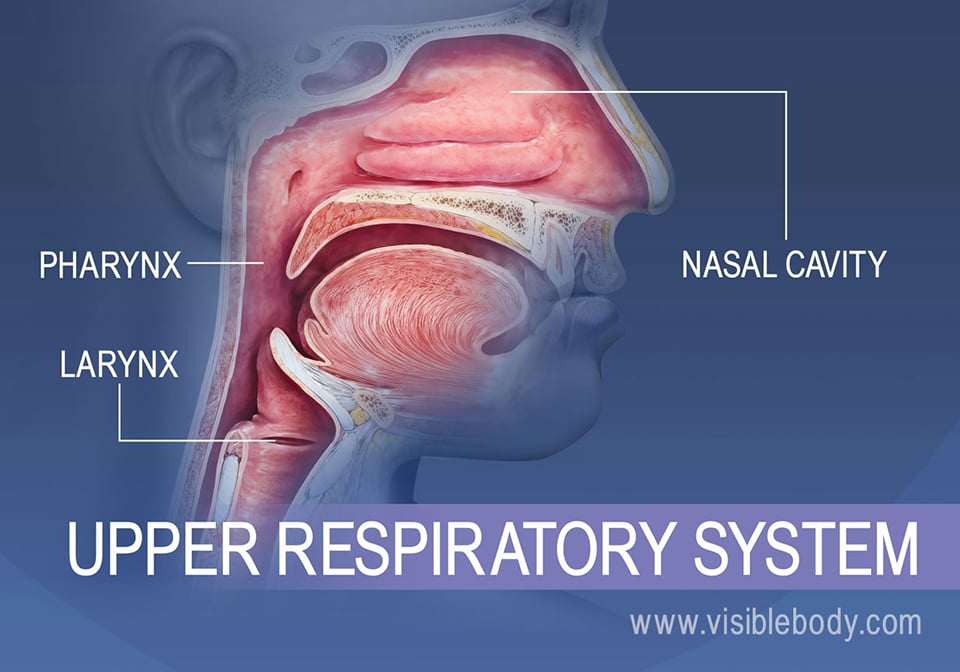
The upper respiratory system, or upper respiratory tract, consists of the nose and nasal cavity, the pharynx, and the larynx. These structures allow us to exhale and speak. They warm and clean the air we inhale: mucous membranes lining upper respiratory structures trap some foreign particles, including fume and other pollutants, before the air travels down to the lungs.
1. The Nose and Nasal Cavities Provide Airways for Respiration

The nasal cavities are chambers of the internal olfactory organ. In front end, the nostrils, or nares, create openings to the outside world. Air is inhaled through the nostrils and warmed as it moves farther into the nasal cavities. Scroll-shaped bones, the nasal conchae, protrude and form spaces through which the air passes. The conchae swirl the air effectually to allow the air time to humidify, warm, and be cleaned earlier it enters the lungs. Epithelial cilia (normally called "nose hair") and a mucous membrane line the inside of the cavities. The cilia, along with mucus produced by seromucous and other glands in the membrane, trap unwanted particles. Finally the filtered, warmed air passes out of the dorsum of the nasal cavities into the nasopharynx, the uppermost office of the pharynx.
2. The Paranasal Sinuses Surround the Nasal Cavities
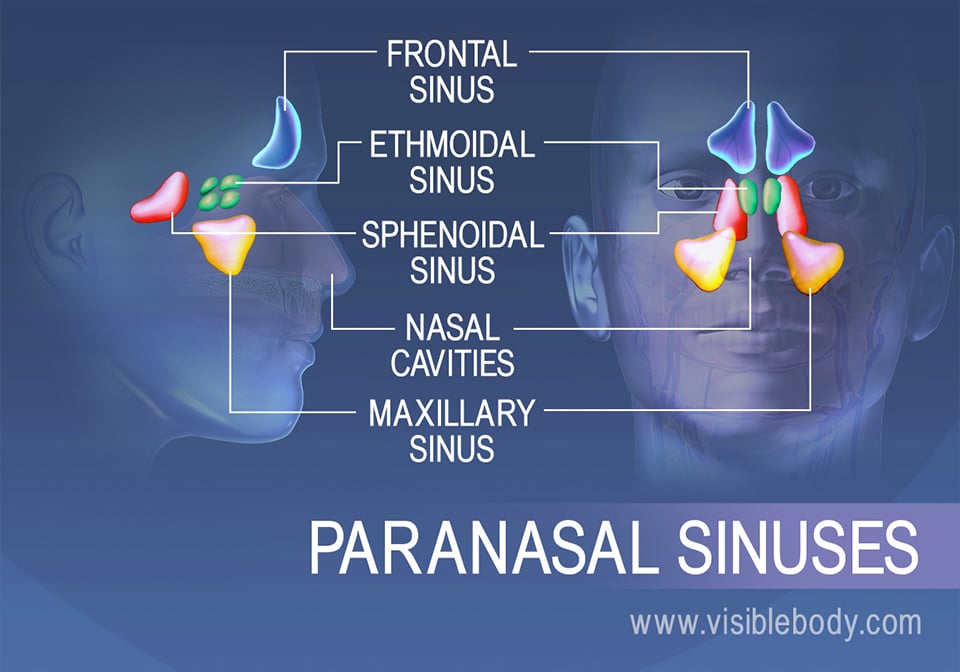
The paranasal sinuses are iv paired, air-filled cavities found inside basic of the skull. These sinuses are named for the skull basic that incorporate them: frontal, ethmoidal, sphenoidal, and maxillary. Mucosae line the paranasal sinuses and aid to warm and humidify the air nosotros inhale. When air enters the sinuses from the nasal cavities, mucus formed past the muscosae drains into the nasal cavities.
three. The Pharynx Connects the Nasal and Oral Cavities to the Larynx and Esophagus
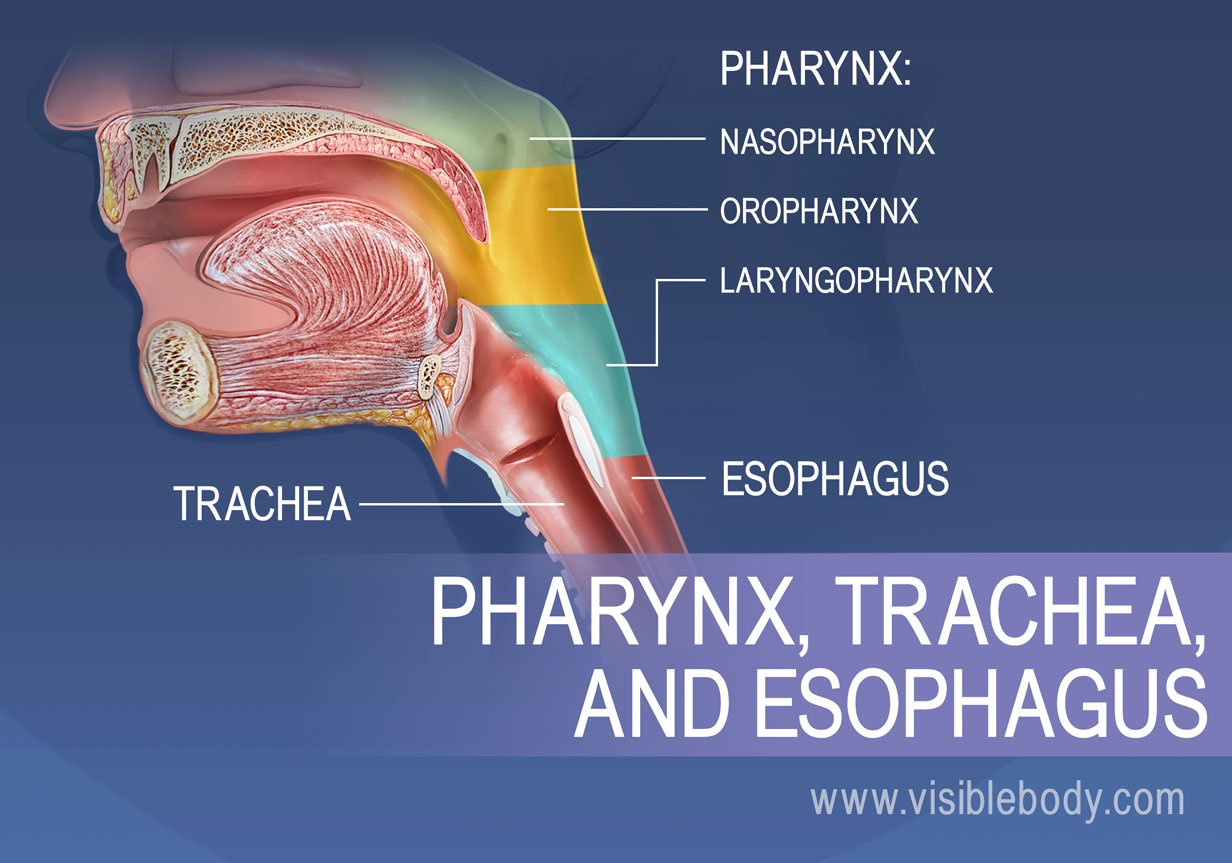
The pharynx, or throat, is shaped like a funnel. During respiration, it conducts air between the larynx and trachea (or "windpipe") and the nasal and the oral cavities. The pharynx includes three regions: The nasopharynx is posterior to the nasal cavity and serves only every bit a passageway for air. The oropharynx lies posterior to the oral crenel and contains the palatine tonsils. Both air and ingested food pass through the oropharynx and through the laryngopharynx beneath. The laryngopharynx lies posterior to the epiglottis and connects to the larynx (superiorly) and the esophagus (inferiorly). As nosotros breathe, the epiglottis stays up and air passes freely between the laryngopharynx and the larynx.
four. The Larynx and Song Cords Allow United states of america to Breathe and Talk and Sing
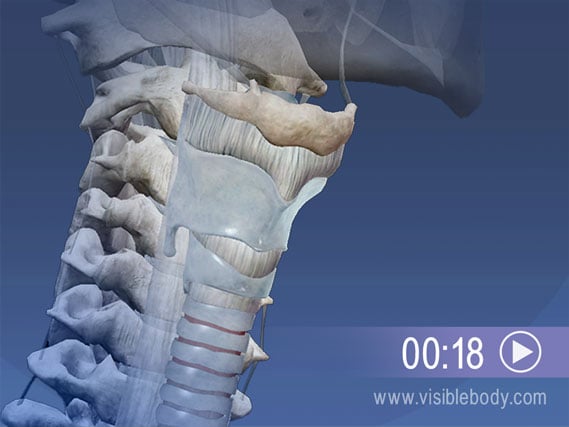
The larynx connects the lower office of the pharynx, the laryngopharynx, to the trachea. It keeps the air passages open during breathing and digestion and is the key organ for producing audio. This larynx is comprised of 9 cartilages. One, the epiglottis, is a lifesaver: Located on the posterior side of the larynx, the epiglottis closes like a trap door as we swallow. This activeness steers nutrient down the esophagus and abroad from the windpipe. Within the larynx are the vocal folds (or truthful song cords), which have elastic ligaments at their core. When we speak, yell, or sing, air coming up from the lungs and trachea vibrates the folds, producing the sound.
five. The Hyoid Is the Only Os in the Body That Doesn't Touch on Another Bone
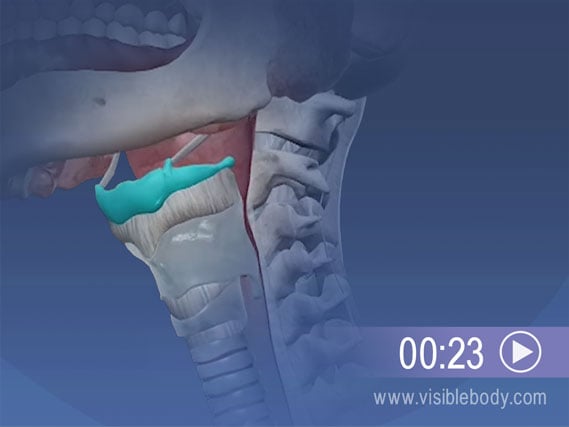
The U-shaped hyoid bone, located just under the chin, is an of import contributor to both respiratory and digestive processes. The hyoid is fastened to the tongue, and helps y'all to swallow at the commencement of digestion. In the respiratory organisation, structures that produce sound depend on the hyoid. The trunk and the greater horns of the bone serve equally attachment points for neck muscles that raise and lower the larynx during speech (as well every bit during swallowing).
Download Respiratory System Lab Transmission
Which Structure Of The Respiratory System Moistens And Filters Inhaled Air?,
Source: https://www.visiblebody.com/learn/respiratory/upper-respiratory-system
Posted by: martindanythe.blogspot.com


0 Response to "Which Structure Of The Respiratory System Moistens And Filters Inhaled Air?"
Post a Comment